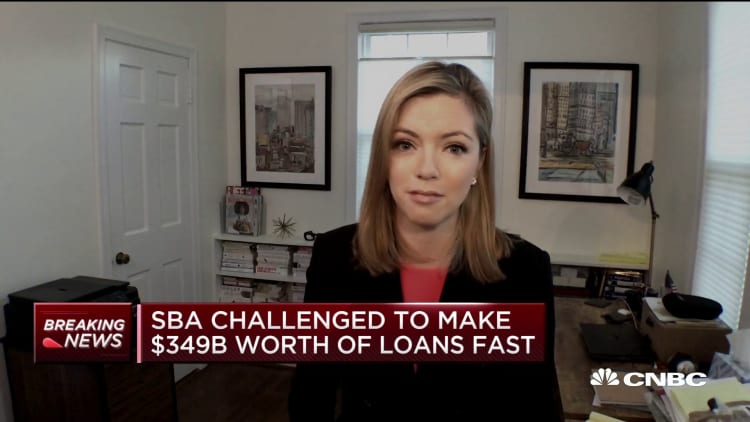If the coronavirus pandemic keeps you from working, there's a chance you might soon have access to sick pay or paid family leave.
As of this month, many businesses with fewer than 500 employees are required to provide those benefits, up to certain amounts and in specific circumstances, as mandated in the recently passed Families First Coronavirus Response Act.
Larger companies, which may or may not already offer paid time off, are not subject to the legislation. (Some that otherwise don't offer those benefits — including Walmart and McDonald's — have announced temporary coronavirus-related sick pay policies.)
However, the new law won't reach all workers at the nation's smaller businesses, either. It allows companies to exclude certain workers in the health-care industry, and businesses with fewer than 50 employees will be able to seek an exemption from at least part of the rules.
Also, it could be a while before affected employers have all the pieces in place to deliver the benefits. Basically, many small businesses, which will get tax credits for providing the paid time off, also are waiting to access forgivable government loans that would help them meet expenses and remain afloat. It's uncertain how long that will take, although the Small Business Administration is scheduled to begin processing loan applications on Friday.
All of the changes expire at the end of the year. And, although the law took effect April 1, regulators said they will not enforce it until after April 17.

If your company will be required to provide the benefits, here's an overview of what you can expect, based on the latest information from the Labor Department and input from the National Federation of Independent Business.
Sick pay
Generally speaking, the rule allows you to take up to two weeks of paid sick leave if you can't work (including telework) because you are under a quarantine order, have coronavirus symptoms and are seeking a diagnosis, or have to care for a quarantined person or a child whose school or daycare provider has shut down.
The amount you'd get for that depends partly on the reason.
If you are sick or under quarantine, and you're a full-time worker, you'd get up to two weeks (80) hours of paid sick leave, at your regular rate. Part-time workers' sick pay would be based on the average hours worked over a two-week period.
In both cases, you'd be paid either at your regular rate or minimum wage, whichever is higher, up to $511 a day and $5,100 over the two weeks of sick leave.
More from Personal Finance:
Employers may drop 401(k) matches to cut costs
Here are answers to questions about stimulus checks
Inherited an IRA? You can skip your distribution for 2020
If you take the sick leave to care for for someone who is quarantined, or to care for a child (under age 18) whose school or daycare provider has shut down, you'd be eligible for two-thirds of your regular pay, or minimum wage, whichever is higher, up to $200 a day with a maximum $2,000 over the two weeks.
Your employer cannot require you to take other paid time off instead.
Paid family leave
The law also allows for 12 weeks of family and medical leave — 10 weeks of it paid at two-thirds of your wages — if you need to care for a child whose school or daycare has closed due to a local declared emergency.
This provision only applies to employees who have been with the company for at least a month. (The two-week paid sick leave generally applies to any employee, regardless of when they were hired.)
While the first two weeks of family leave technically would be unpaid, qualifying workers who use two weeks of sick pay to care for children could go straight from that to the paid 10 weeks of family leave.
The maximum you could get under this rule is also $200 a day, with a maximum of $10,000 over the 10 weeks.


